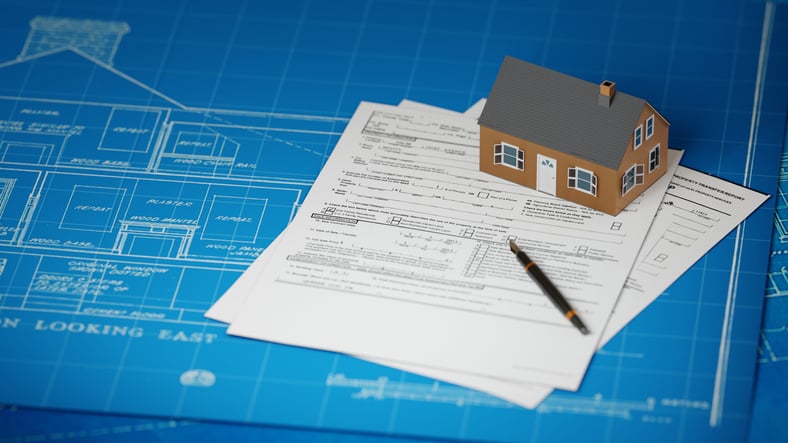
Editorial Note: This article was brought to you courtesy of Patrick Hogan, CEO of Handle.com.
Payment delays are not uncommon in the construction industry. Construction contractors and vendors are often very experienced with dealing with delays. However, each day past due hurts your cash flow and bottom line. If you’ve satisfied your end of the contract but are left waiting for the client to pay up, what’s the next best step?
Get on the Same Page with the Client
Finding out why a client misses an invoice due date is the best first step. There are many possible reasons if you’re trying to hypothesize before deciding what to do next. However, you’d be best served by communicating with the client directly instead of ruminating on the possible reasons and jumping to conclusions.
There are times when the client withholds payment because they are unsatisfied with the work you’ve provided. It can be challenging for bigger construction projects to determine which sections or parts of the project the client feels have not been up to scratch with what’s agreed upon in the contract. If you’re a direct contractor who has hired subcontractors to fulfill part of the work, ensuring that you’ve checked that the work provided is aligned with client expectations as outlined in the contract must be included in your workflow.
Ask the client for direct feedback on the work–this might be a softer approach than leading with your payment demand. If the work you’ve provided satisfies what you’re obligated to provide, and the client expresses dissatisfaction, make sure that you ask them the specifics of their feedback. From there, it might be best to do another thorough evaluation of the work. If the contract for the project is thoroughly threshed out, with all deliverables described in detail, and you’ve provided what’s contractually obligated, there might have been a miscommunication in the process. This can result in a tense dialogue with the client.

Going through the contract with them and showing what has been completed vis-a-vis the contractual requirements can clear the air. There are cases where the dissatisfaction stems from the client changing their mind about what they wanted. The best way forward is to provide options. However, make sure you’re not getting the shorter end of the stick by committing to unpaid work not covered in the contract. In some cases, especially for clients whom you’ve had good dealings with historically, it may be worth doing minor work to meet their expectations. At this point, you are safe to demand payment by sending a past-due reminder and having a conversation about missed payments before proceeding.
If, after clarifying that you’ve delivered what’s contractually required or have provided options to meet their expectations, the client refuses to pay and has refused conversations around payment altogether, you have a delinquent client in your hands.
Pursue Legal Avenues
Suppose you’ve exhausted collection tactics, and it seems like the client is unwilling to pay or make arrangements around paying. In that case, it may be time to pursue legal avenues available to construction contractors.
Mechanics liens are an essential part of your toolbox as a contractor. A mechanics lien places a hold on the property where the work of improvement was provided. In the event of non-payment, you may enforce the lien, and it can result in the foreclosure sale of the property– the proceeds from which are used to pay unpaid claimants.
A mechanics lien protects contractors from delinquent clients–but this right comes with responsibilities. Depending on the state where the project is located, preliminary notices or pre-lien notices may be required to protect your right to lien. In many cases, the failure to file a preliminary notice in the time and manner required by law can result in the loss of your right to lien.
For example, the preliminary notice in California must be filed by subcontractors and material suppliers within the first 20 days of work or materials delivery to protect the right to lien for the entirety of the work or materials provided. For general contractors in California, all contracts must include a Mechanics Lien Warning, which protects lien rights even without a notice.

Preliminary notices serve as a reminder for clients to pay on time as it includes information on what the contractors’ rights are in the event they go unpaid. Most importantly, pre-lien notices protect your right to file and enforce a lien if the client fails to pay. It’s best to know which notices apply to your projects. Do note that filing pre-lien notices is not an indication of your or the client’s financial standing–it’s just smart business practice. Automate this process through lien management software for all your projects to avoid missed deadlines, leaving you with no options if a project goes sideways.
If you’ve satisfied the preliminary notice requirements of the state where the project is located, you are eligible to file a lien to recover payments. It’s important to know the deadline within which you can file a lien because late filing usually results in an invalid claim. Usually, the deadline is a set number of days after the work is completed or terminated. Accuracy of the information on all notices and documents you file with the county recorder concerning the project is also critical. Inaccurate information can lead to lien invalidation as well.
When you’ve decided to file a lien, the relationship with the client is likely already contentious. Note that most states provide a window between filing and enforcing the lien. And in this period, the client can still pay to avoid having a lien enforced on their property. Most states have lien waiver processes that allow them to release the lien from their property once they’ve settled. If the client still fails to pay during this window, the next step is to enforce the lien.
Enforcing the lien involves filing a lawsuit. As long as you’ve satisfied the requirements prescribed in state lien laws, a judgment in your favor is likely.
Re-Evaluate Your Credit Policy
Mechanics lien laws exist to protect construction contractors and vendors from non-payment. They are also designed to include sending of notices on different points of the project and its completion, meant to encourage the client to pay instead of the project going into foreclosure. For all parties, enforcing a mechanics lien is not a simple process, and it’s best to avoid getting to the point where you have to enforce one. It’s still best for all parties to avoid a situation where a mechanics lien has to be filed. As the service or materials provider, there are things you can do to avoid being in this situation.

While non-payment is unfortunately common in construction, there are many ways to mitigate risk as a contractor. A cornerstone of financial risk management in construction is establishing a solid credit policy.
With your industry know-how, familiarity with the markets you operate in, and existing relationships with construction stakeholders, you are equipped to create a strong credit policy that serves as a playbook as you deal with clients and projects in construction.
Your credit policy influences and dictates many parts of business operations, including your vetting process when acquiring new clients.
It must help you profile clients and decide the amount of credit to extend. There may be cases where a more significant down payment is wise to require for clients whose credit standing is not the best or for clients who are new in the business. It can be tempting to be very lax in your credit policy to increase sales. However, construction projects that result in non-payment can hurt your business substantially, and the increase in sales might be temporary on paper. Unfortunately, avoiding delinquent clients is a genuine concern for those who operate construction businesses–your credit policy must reflect this.
Dealing with late payments is a fact of life in construction. Contractors and other construction businesses, fortunately, have legal avenues to explore when faced with delinquent clients. It’s part of the work to be familiar with the laws that protect you and your business–mainly because your rights are usually contingent on filing the notices required to protect your right to file liens for all projects you work on.
This is a guest post written by Patrick Hogan, CEO of Handle.com.